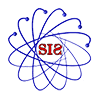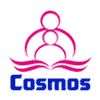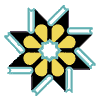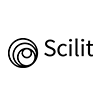The role of Oromo indigenous knowledge in disaster Management and Protection: the case of Kuttaayee Oromo in Ambo district
Abstract
This paper addresses the Role of Oromo indigenous knowledge in disaster management and protection.Oromo indigenous knowledge in disaster management and protection is essential for the sustainable disaster management and health of the natural environment and its inhabitants. It presented Oromo indigenous knowledge in disaster management and disaster prevention. Data were obtained from primary sources from key informants through interview, Focus Group Discussion (FGD) and observation and analysed qualitatively. The contribution of Oromo belief system, value, norm, custom and worldview in disaster prevention and environmental management is also discussed. The Oromo people have developed detailed interactive knowledge of the heavens, of the Earth, of the weather, of the animals, of vegetation, of the water, of the soil, of crops, of insects, and of environmental and nutritional requirements, properties and peculiarities
Full Text:
PDFReferences
Agrawal, A. (1995).Dismantling the divide
betweenindigenous and. scientific knowledge; Development and Change. 26 (3). pp. 413–39
A.M. Manyatsi. (2011). Application of
Indigenous Knowledge Systems in Hydrological Disaster Management in Swaziland Current Research Journal of Social Sciences 3(4): 353-357, 2011
Aneesa Kassam. (2002). Ethno theory, ethno
Praxis: ethno development in the Oromi National state of Ethiopia. ASA Monographs (vol. no. 39)
Asia-Pacific Forum on Women, Law and
Development, Vol. 18, No. 3 (Sept. 2005) Women in Disaster – looking back on the impact of 1995Kobe earthquake on women. Accessed on 27/01/08 at:
Bank off, G., (2002) Cultures of Disaster:
Society and Natural Hazards in the Philippines. Rout ledge, London
Dekens, J. (2007) Local Knowledge for
Disaster Preparedness: A Literature Review. International Centre for Integrated Mountain Development, Kathmandu.
Desalegn Fufa. (2013). Indigenous
Knowledge of Oromo on Conservation of Forests and its Implications to Curriculum Development: the Case of the Guji Oromo. A thesis submitted to Addis Ababa University
Dewald van Niekerk. 2011. Introduction to disaster risk reduction.USAID Disaster Risk Reduction Training Course for Southern Africa
Ehrenreich J H. (2001). A Guidebook to
Psychosocial Intervention. Centre for Psychology and Society, State University of New York: Old Westbury, NY.
Fichtl, R., & Admasu, A. (1994). Honeybee.
Flora of Ethiopia. Wurzburg: Benedict
Press
Gemetchu Megersa. (2005).the Oromo World-View. The Journal of Oromo Studies Volume 12, Numbers 1& 2.Pp 68-78
Jay L. Garfield, William Edelglass. (2011). the Oxford Handbook of World Philosophy. Oxford University press.
Jessica Mercer et al (2009) Framework for
Integrating indigenous and scientific
knowledge for disaster risk reduction
Blackwell Publishing
Kassam, Aneesa, and Garnatchu Megersa.
(1994). Aloof Alollaa: The Inside and' the Outsid Boran Oromo Environmental Law and Methods of Conservation. In A river of blessings: Essays in honour of Paul Baxter, edited by D. Brokensha, 85-98. New York: Maxwell School Citizenship and Public Affairs.
Kitessa Hundera.(2007).Traditional forest
Management practices in Jimma Zone, South West Ethiopia. Ethiopian Journal of education and sciences vol.3
Lambert Bartels. (1990). Oromo religion:
Myths and rites of the Western Oromo of Ethiopia An attempt to understand. Berlin: Dietrich Reinner.
Lamessa Margo. (2012). “The scene does
Not speak”: The demise of odaa bulluq sacred forest from Horro guduru land scape, north western Oromia, Ethiopia. Journal of Oromo studies vol.19 (1and 2)
Martial de salviac. (1901). the Oromo: an
Ancient people great African Nation, tras. Ayelew Kenno, --------- Oromia Culture and tourism bureau.
Melaku Getahun J (2016) Oromo Indigenous Knowledge and Practices in Natural Resources Management: Land, Forest, and Water in Focus. J Ecosys Eco graph 6: 181
Morris, D., (2005). Indigenous Knowledge
Systems (IKS) and the Teaching of History: Case Studies in a Museum Archaeology Context
Nocera, A. and Garner, A. (1999) Australian
Disaster triage: A color maze in the Tower of Babel.
Otieno, K. (2006) Media Role in Disaster
Risk Management Accessed on 25/01/08 at: http://www.undp.org/drylands/docs/drought/workshop-
Rattien, S. (1994) the role of the media in
Hazard mitigation and disaster
management.________
Tekwa, I.J. and M.D. Belel, (2009). Impacts
of traditional soil conservation practices in sustainable food production. J. Agric. Soc. Sci., 5: 128-130.
Thomas, Nikolai “GIS and Disaster
Management: A case of Jamaica”. Accessed on 2/02/08
at: http://www.cuso.org/_files/
United Nations Development Programme.2013.Buildin Community-Resilience in Disaster
UNISDR (United Nations International Strategy for Disaster Reduction). 2009. UNISDR terminology on disaster risk reduction. Geneva: UNISDR.
Usman F.B. Olorunfemi, G.P. Awotayo, A.M. Tunde and B.A. Usman2013 Disaster Risk Management and Social Impact Assessment: Understanding Preparedness, Response and Recovery in Community Projects
Warren, D. M., (1991). The Role of Indigenous Knowledge in Facilitating the Agricultural Extension Process. Paper presented at International Workshop on Agricultural Knowledge Systems and the Role of Extension. Bad Boll, Germany, May 21-24.
Wood, K. (2005). Vulnerability of Women in
Disaster Situations. Retrieved on 20/11/07 from: Virtual University for the Small States of the Commonwealth (VUSSC) team.
Workineh Kelbessa. (2001). Traditional
Oromo attitudes towards environment: An argument for environmentally sound development”.OSSREA social science research report series. Commercial printing enterprise. Addis Ababa.
__________ 2005. The utility of ethical
Dialogue for marginalizedvoices in Africa. Discussion paper. Addis Ababa University
DOI: http://dx.doi.org/10.18415/ijmmu.v4i5.89
Refbacks
- There are currently no refbacks.
Copyright (c) 2017 International Journal of Multicultural and Multireligious Understanding

This work is licensed under a Creative Commons Attribution-NonCommercial-NoDerivatives 4.0 International License.
https://ijmmu.com
editor@ijmmu.com
facebook.com/ijmmu
Copyright © 2014-2018 IJMMU. All rights reserved.




































